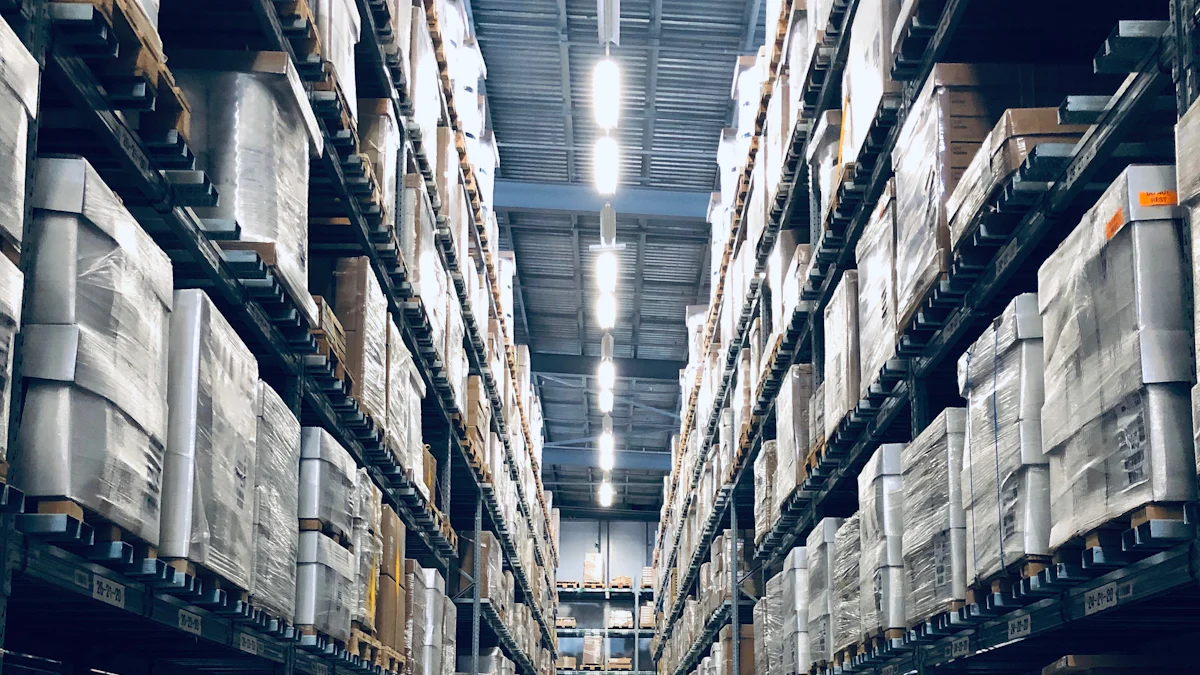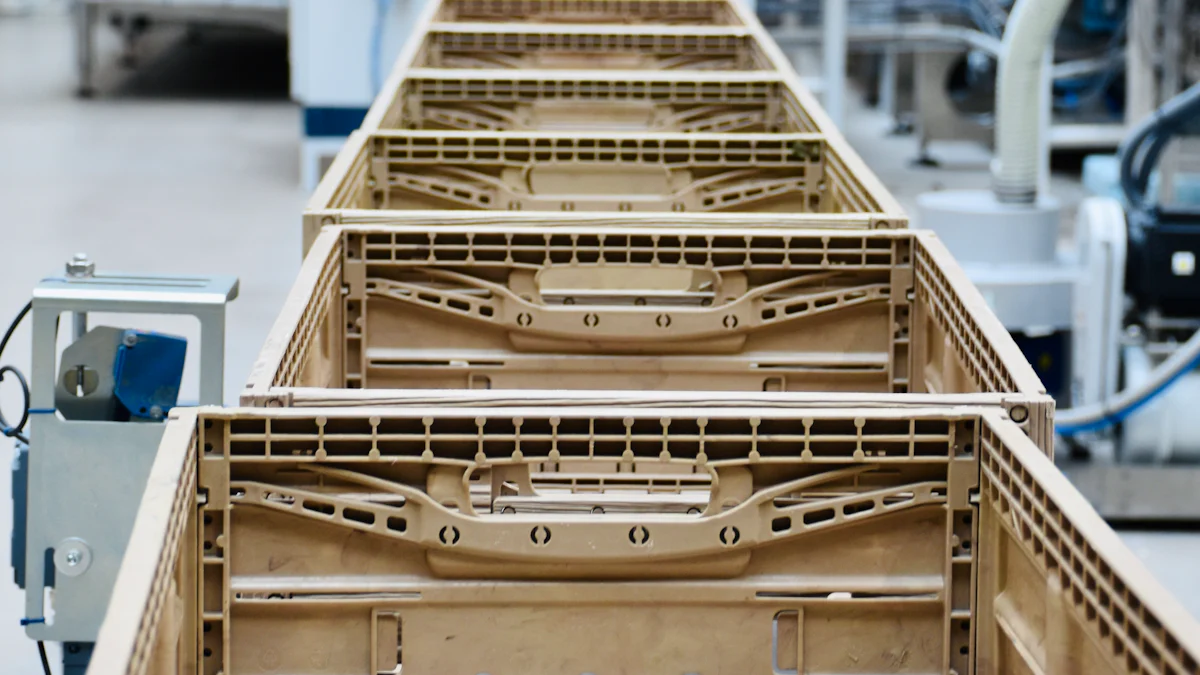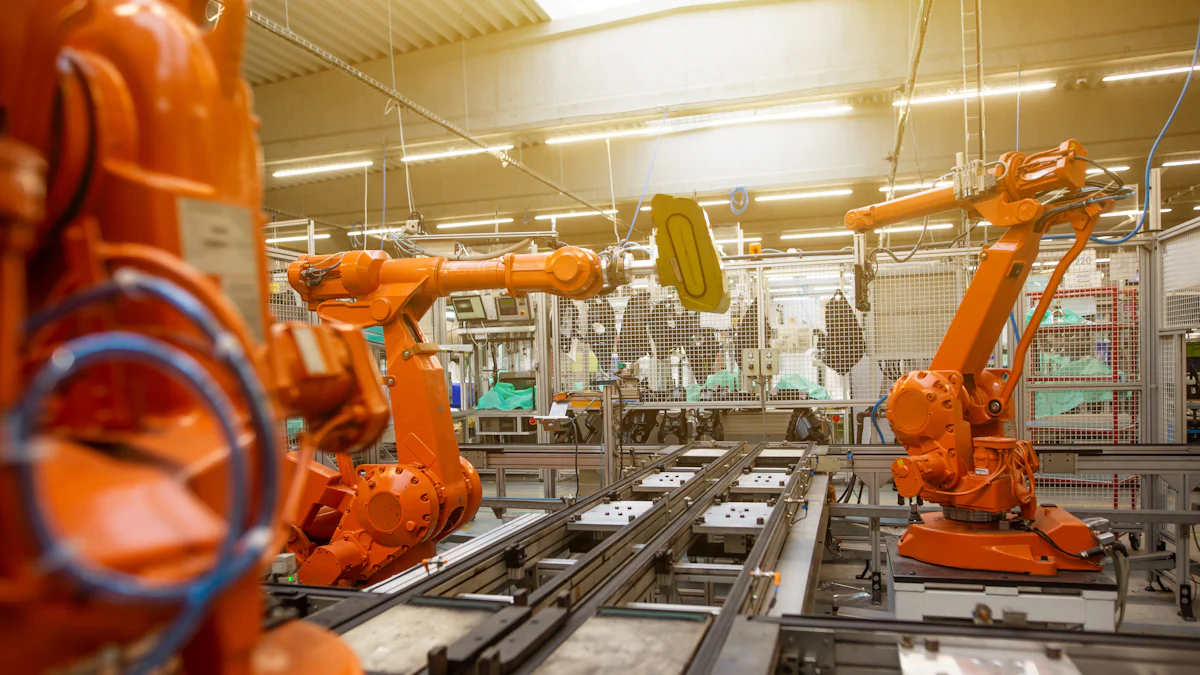The Power of Logistics Robotics: Enhancing Warehouse Productivity

Logistics robotics, a cutting-edge technology revolutionizing warehouse operations, is at the forefront of modern logistics. The integration of robotics in warehouses is pivotal for enhancing efficiency, accuracy, and safety. Today's blog will delve into the transformative impact of logistics robotics in key areas such as order picking, packing, sorting, and inventory management.
The Role of Logistics Robotics

In the realm of warehouse operations, logistics robotics has emerged as a game-changing technology. These advanced systems, such as Logistics Robots, are designed to streamline tasks within production centers and warehouses. By integrating these robots into daily operations, businesses can achieve faster order processing, efficient storage and retrieval of large loads, and seamless item movement. The primary objective behind the utilization of AI-equipped Robots in logistics is to effectively manage variability and unpredictability in warehouse environments.
Definition and Scope
Logistics robotics refers to the application of robotic technology in handling various tasks within warehouses. These robots are programmed to perform functions like order picking, packing, sorting, and inventory management autonomously. The scope of logistics robotics in warehousing extends beyond mere automation; it aims to maximize productivity and efficiency by leveraging cutting-edge technologies.
What is logistics robotics
The term "logistics robotics" encompasses a wide range of autonomous systems that are specifically designed to automate product flows within warehouses. These robots play a crucial role in enhancing safety measures while increasing overall productivity levels.
Scope of logistics robotics in warehousing
The integration of logistics robotics in warehousing operations offers numerous benefits such as improved efficiency, enhanced accuracy, and optimized safety protocols. Companies across various industries are increasingly adopting these robotic solutions to streamline their supply chain processes.
Benefits of Logistics Robotics
The adoption of logistics robotics brings forth a myriad of advantages for warehouse operations. One key benefit is the significant increase in operational efficiency that these robots offer. By automating repetitive tasks, they allow human workers to focus on more strategic responsibilities.
Increased efficiency
With the assistance of high-performance Robots, warehouses can experience a boost in their order fulfillment capabilities. These robots leverage innovative technologies like 3D robotic vision and artificial intelligence (AI) to optimize motion control processes.
Improved accuracy
Robotic picking systems have revolutionized the way orders are fulfilled within warehouses. Through precise navigation capabilities and swift item retrieval methods, these systems ensure that each order is accurately picked and processed with minimal errors.
Logistics Robotics in Action
Several companies have already embraced the transformative power of logistics robotics within their warehouse facilities. For instance, the RUNPICK Robot has proven its ability to enhance throughput rates while ensuring adaptable solutions for food retail environments.
By harnessing the potential of robotic technologies like AI-powered Warehouse Automation systems, businesses can significantly improve their inventory management practices. These AI-driven solutions enable real-time tracking and monitoring capabilities that lead to better inventory control and reduced losses.
Key Applications in Warehousing

Order Picking
Automated order picking systems
Logistics robotics play a pivotal role in revolutionizing the process of order picking within warehouses. By implementing automated order picking systems, businesses can significantly enhance their operational efficiency and accuracy. These advanced robotic solutions are designed to streamline the retrieval of items from storage locations, minimizing errors and optimizing the fulfillment process.
Implementing automated order picking systems leads to a substantial increase in productivity levels by reducing the time required for manual picking tasks.
The integration of robotics ensures precise item selection, resulting in improved order accuracy and customer satisfaction.
Automated order picking systems leverage cutting-edge technologies such as artificial intelligence (AI) and machine learning to optimize route planning and item selection processes.
Benefits of robotic order picking
The adoption of robotic technologies for order picking offers a wide array of benefits for warehouse operations. Businesses that embrace robotic order picking experience enhanced efficiency, reduced labor costs, and improved overall performance. These benefits contribute to a more streamlined and effective supply chain management system.
Robotic order picking systems contribute to increased throughput rates, allowing warehouses to fulfill orders at a faster pace.
By automating the order picking process, businesses can minimize human error, leading to higher accuracy levels in fulfilling customer orders.
The implementation of robotic order picking results in a safer working environment for warehouse personnel by reducing manual handling risks.
Packing and Sorting
Robotic packing systems
Incorporating robotic packing systems into warehouse operations transforms the packaging process by introducing automation and precision. These advanced robotic solutions are capable of handling various packaging tasks with speed and accuracy, ensuring that products are packaged efficiently before shipment.
Robotic packing systems streamline the packaging workflow by automating tasks such as product wrapping, sealing, and labeling.
By utilizing robotics for packing purposes, businesses can reduce packaging errors and minimize product damage during transit.
The integration of robotic packing systems optimizes space utilization within warehouses, leading to more efficient storage arrangements.
Sorting efficiency with robots
Efficient sorting is essential for maintaining smooth warehouse operations, and robots play a crucial role in enhancing this aspect. Robotic sorting systems are designed to categorize items based on predefined criteria quickly and accurately. This results in improved inventory organization and expedited order processing timelines.
"Enhanced sorting efficiency with robots enables warehouses to handle large volumes of inventory with precision while minimizing processing delays."
By leveraging robotic technologies for sorting tasks, businesses can achieve greater operational agility and responsiveness to changing demand patterns.
Inventory Management
Autonomous inventory tracking
The implementation of autonomous inventory tracking through robotics brings unprecedented visibility into warehouse stock levels. These automated tracking systems utilize sensors and data analytics to monitor inventory movements in real-time, enabling proactive decision-making regarding restocking activities.
Autonomous inventory tracking enhances inventory accuracy by providing real-time updates on stock levels across different warehouse zones.
By automating inventory tracking processes, businesses can reduce instances of stockouts or overstocking situations that impact operational efficiency.
The use of autonomous tracking technology allows warehouses to implement "just-in-time" inventory practices effectively.
Benefits for warehouse management
The benefits derived from utilizing robotics for inventory management extend beyond accurate stock monitoring capabilities. Warehouse managers experience improved control over inventory-related processes through enhanced visibility provided by autonomous tracking solutions.
Autonomous inventory tracking contributes to better demand forecasting accuracy by offering detailed insights into consumption patterns.
Warehouse managers can optimize storage space allocation based on real-time inventory data provided by autonomous tracking systems.
The implementation of autonomous inventory management solutions streamlines replenishment workflows, ensuring that stock levels are maintained at optimal levels throughout operations.
Future Trends in Logistics Robotics
Emerging Technologies
AI and machine learning in robotics
The integration of AI and machine learning in logistics robotics is reshaping the warehouse landscape. These technologies empower robots to adapt, learn, and make informed decisions, enhancing their operational efficiency. By leveraging AI algorithms, robots can navigate complex warehouse environments with precision, optimizing tasks such as sorting, picking, and packing.
AI-equipped robots streamline order fulfillment processes by utilizing real-time data for inventory organization.
Machine learning enables robots to enhance decision-making capabilities, leading to improved operational efficiency.
The adoption of AI-driven sensors and cameras facilitates accurate tracking of inventory movements within warehouses.
Autonomous vehicles in logistics
The utilization of autonomous vehicles marks a significant advancement in logistics robotics. These vehicles are designed to transport goods within warehouses autonomously, reducing manual handling and streamlining material flow. By incorporating autonomous vehicles into warehouse operations, businesses can achieve higher levels of efficiency and productivity.
Autonomous vehicles optimize material handling processes by automating transportation tasks.
The implementation of autonomous vehicles minimizes the risk of human errors during goods movement.
These vehicles contribute to a safer working environment by reducing the need for manual transportation activities.
Industry Predictions
Future developments in logistics robotics
The future of logistics robotics holds promising advancements that will revolutionize warehouse operations. With ongoing technological innovations, robots are expected to become more versatile and adaptable to diverse tasks within warehouses. Future developments may include enhanced robotic functionalities for tasks like inventory management, order processing, and facility maintenance.
"The continuous evolution of logistics robotics will lead to increased automation across various warehouse functions."
As companies invest more in robotic solutions, the industry is poised for significant growth and transformation in the coming years.
Potential challenges and solutions
While the adoption of logistics robotics presents numerous benefits, it also poses certain challenges that need to be addressed proactively. One key challenge is ensuring seamless integration between robotic systems and existing warehouse infrastructure. Companies must invest in robust connectivity solutions to enable efficient communication between robots and other equipment.
Overcoming potential technical glitches requires continuous monitoring and maintenance of robotic systems.
Addressing workforce concerns related to job displacement necessitates effective training programs for employees transitioning to roles alongside robots.
Implementing cybersecurity measures is crucial to safeguard sensitive data transmitted between interconnected robotic devices.
Robotics in logistics has significant benefits for companies, allowing for enhanced productivity and lower operating costs. This technology saves money over time and helps meet demand with improved resilience to labor shortages and supply chain challenges.
Robotics in logistics enhances workplace safety and well-being by lowering the possibility of accidents and injuries at work. This ensures a safer workplace environment for employees, contributing to overall workforce satisfaction.
The future of robotics in logistics holds significant advantages, including increased efficiency, improved safety, and reduced labor costs. Businesses and consumers can expect a positive impact from the continuous evolution of robotics technology within the industry.
See Also
Innovative Advances in Logistics: Exploring Tomorrow's Possibilities
Transforming Logistics: How Supply Chain Innovation is Changing the Game
Enhancing Logistics Efficiency: The JUSDA Approach
Efficient Strategies for Addressing High-Tech Manufacturing Supply Chain Challenges
Exploring the Next Generation Supply Chain: Insights on AI Integration
